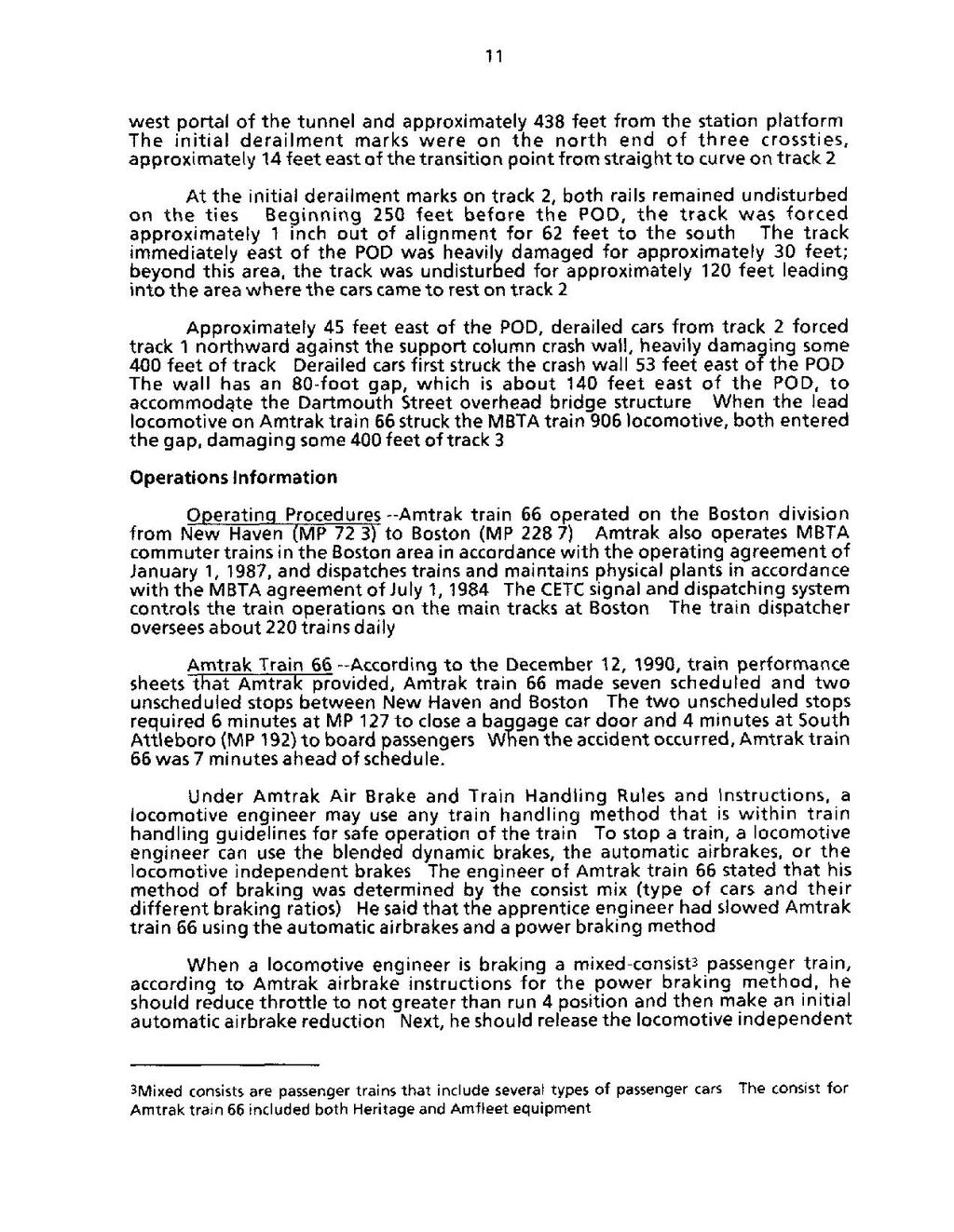11
west portal of the tunnel and approximately 438 feet from the station platform The initial derailment marks were on the north end of three crossties, approximately 14 feet east of the transition point from straight to curve on track 2.
At the initial derailment marks on track 2, both rails remained undisturbed on the ties Beginning 250 feet before the POD, the track was forced approximately 1 inch out of alignment for 62 feet to the south. The track immediately east of the POD was heavily damaged for approximately 30 feet; beyond this area, the track was undisturbed for approximately 120 feet leading into the area where the cars came to rest on track 2.
Approximately 45 feet east of the POD, derailed cars from track 2 forced track 1 northward against the support column crash wall, heavily damaging some 400 feet of track Derailed cars first struck the crash wall 53 feet east of the POD. The wall has an 80-foot gap, which is about 140 feet east of the POD, to accommodate the Dartmouth Street overhead bridge structure. When the lead locomotive on Amtrak train 66 struck the MBTA train 906 locomotive, both entered the gap, damaging some 400 feet of track 3.
Operations Information
Operating Procedures—Amtrak train 66 operated on the Boston division from New Haven (MP 72.3) to Boston (MP 228.7) Amtrak also operates MBTA commuter trains in the Boston area in accordance with the operating agreement of January 1, 1987, and dispatches trains and maintains physical plants in accordance with the MBTA agreement of July 1, 1984. The CETC signal and dispatching system controls the train operations on the main tracks at Boston. The train dispatcher oversees about 220 trains daily.
Amtrak Train 66—According to the December 12, 1990, train performance sheets that Amtrak provided, Amtrak train 66 made seven scheduled and two unscheduled stops between New Haven and Boston. The two unscheduled stops required 6 minutes at MP 127 to close a baggage car door and 4 minutes at South Attleboro (MP 192) to board passengers. When the accident occurred, Amtrak train 66 was 7 minutes ahead of schedule.
Under Amtrak Air Brake and Train Handling Rules and Instructions, a locomotive engineer may use any train handling method that is within train handling guidelines for safe operation of the train. To stop a train, a locomotive engineer can use the blended dynamic brakes, the automatic airbrakes, or the locomotive independent brakes. The engineer of Amtrak train 66 stated that his method of braking was determined by the consist mix (type of cars and their different braking ratios). He said that the apprentice engineer had slowed Amtrak train 66 using the automatic airbrakes and a power braking method.
When a locomotive engineer is braking a mixed-consist[1] passenger train, according to Amtrak airbrake instructions for the power braking method, he should reduce throttle to not greater than run 4 position and then make an initial automatic airbrake reduction. Next, he should release the locomotive independent
- ↑ Mixed consists are passenger trains that include several types of passenger cars. The consist for Amtrak train 66 included both Heritage and Amfleet equipment.
